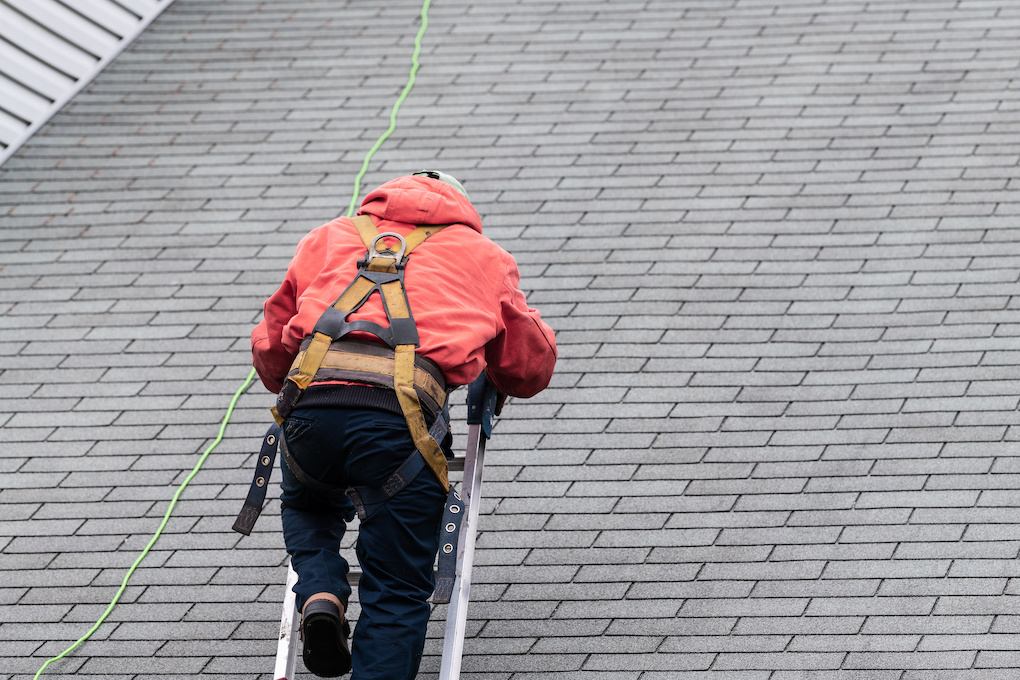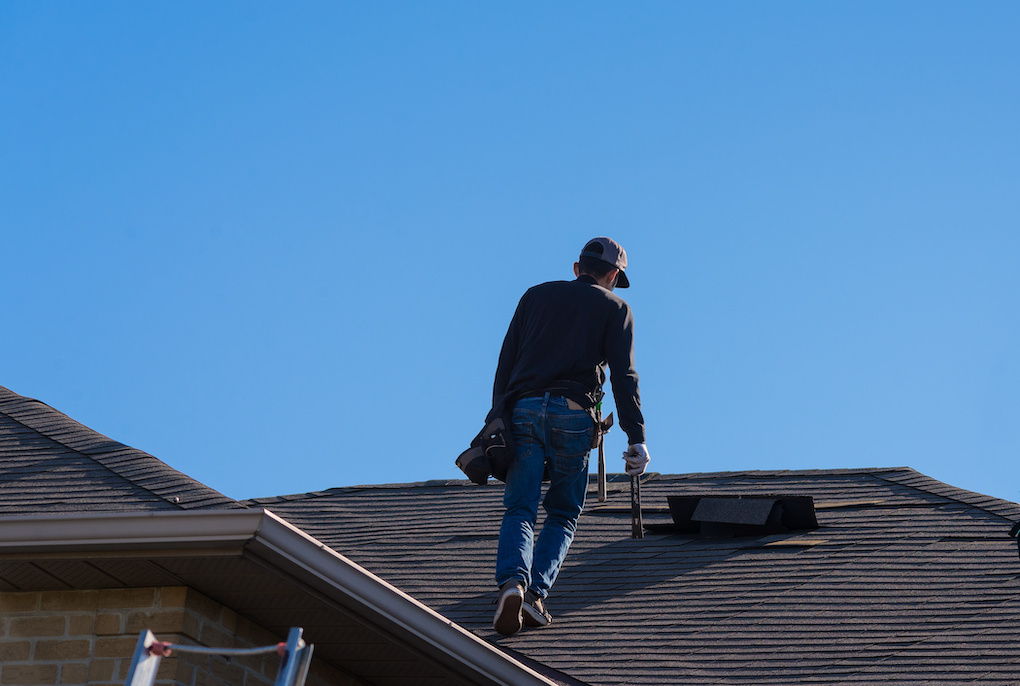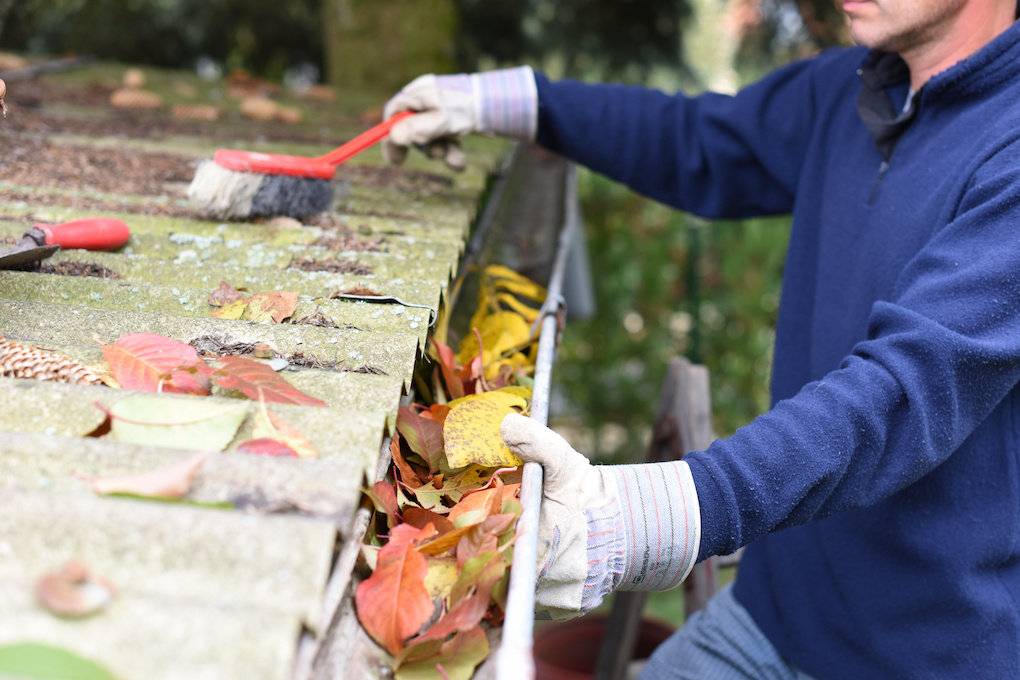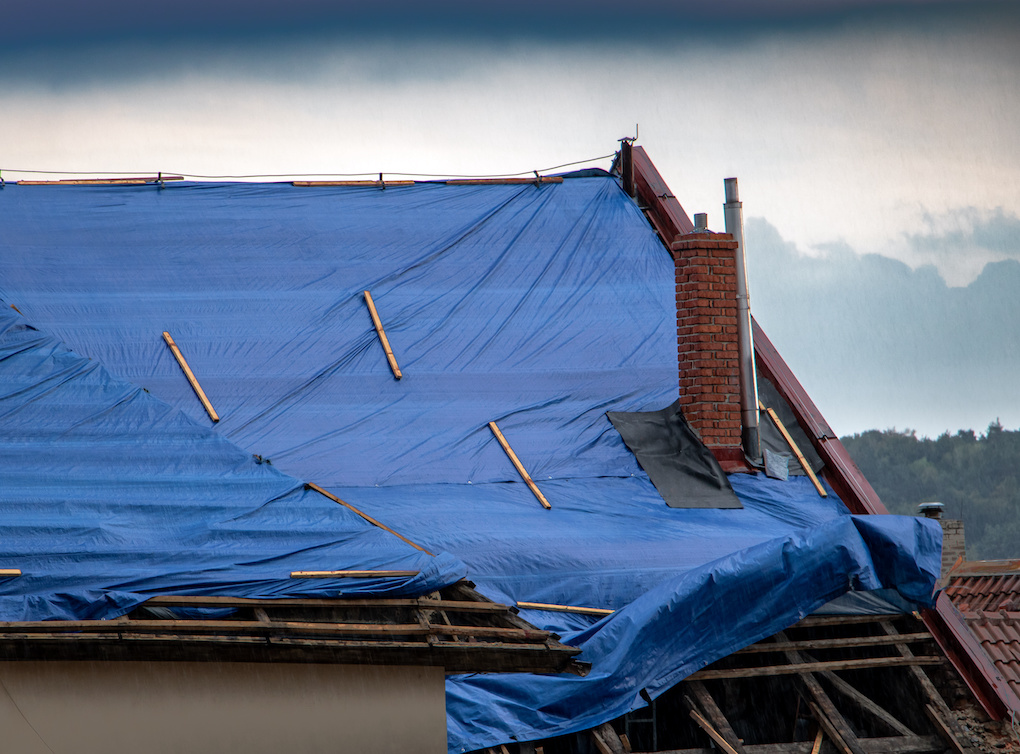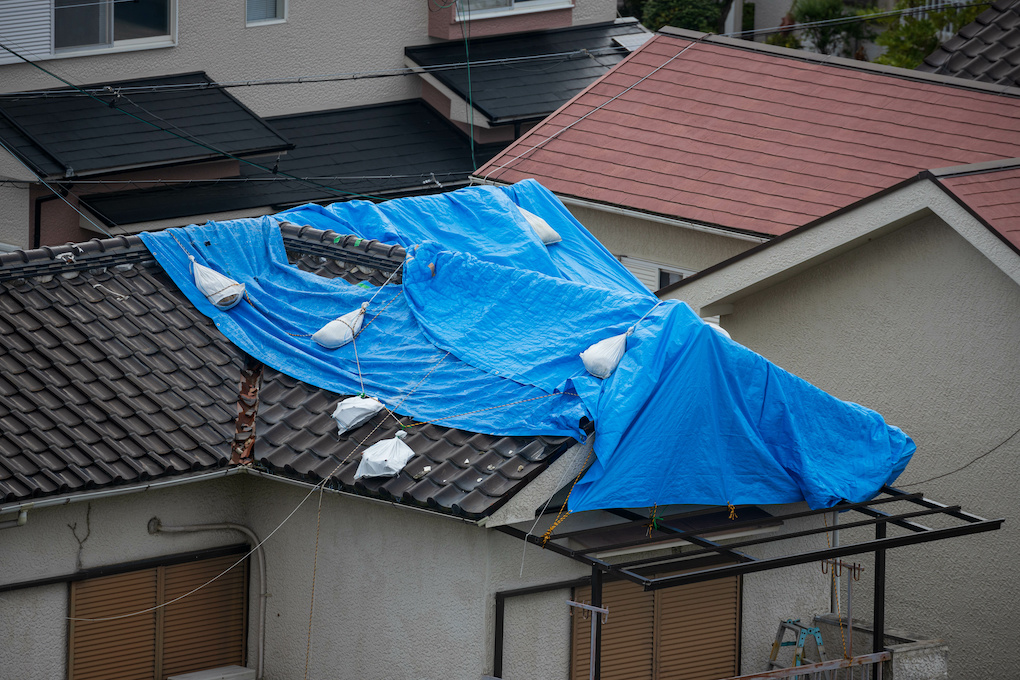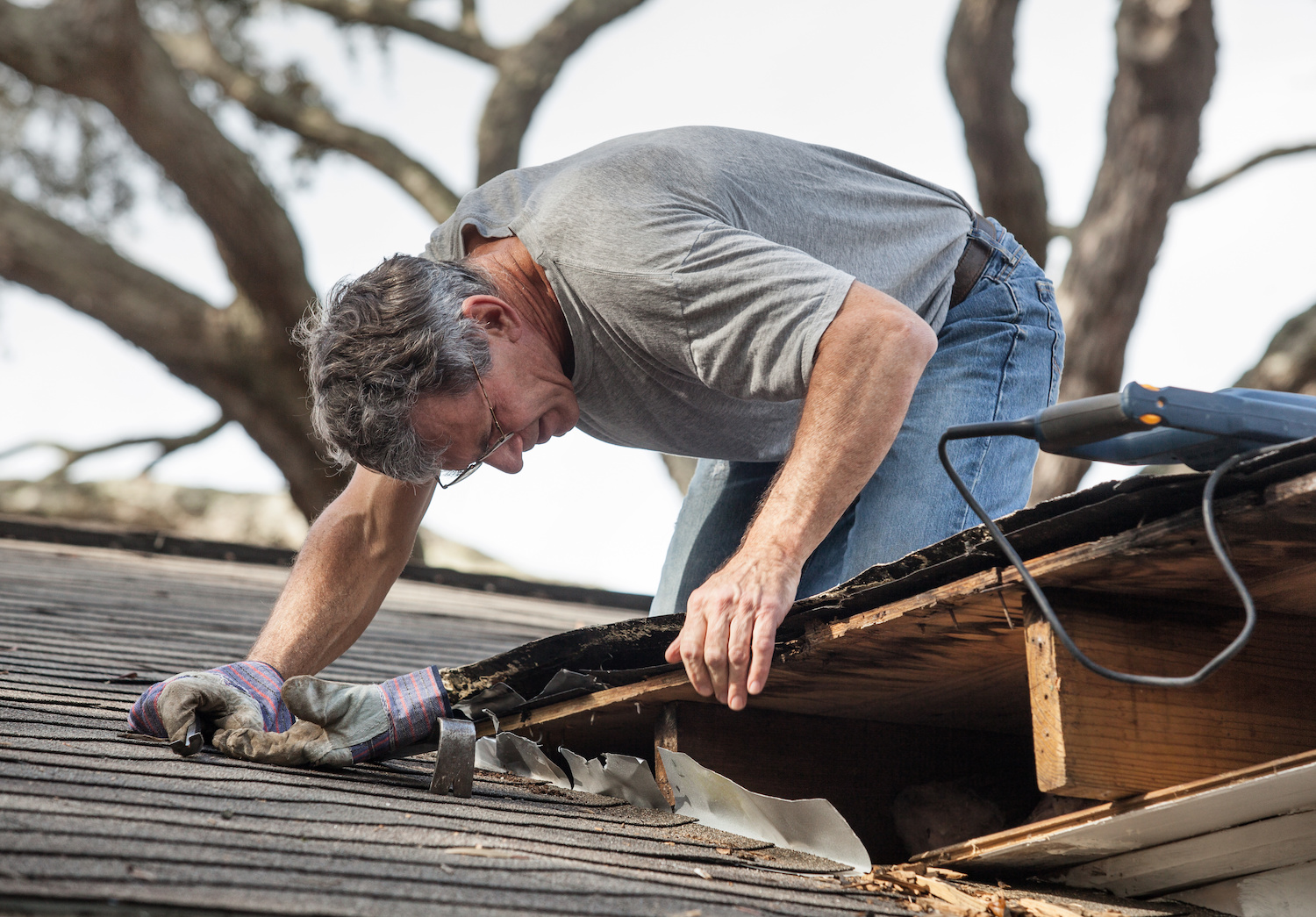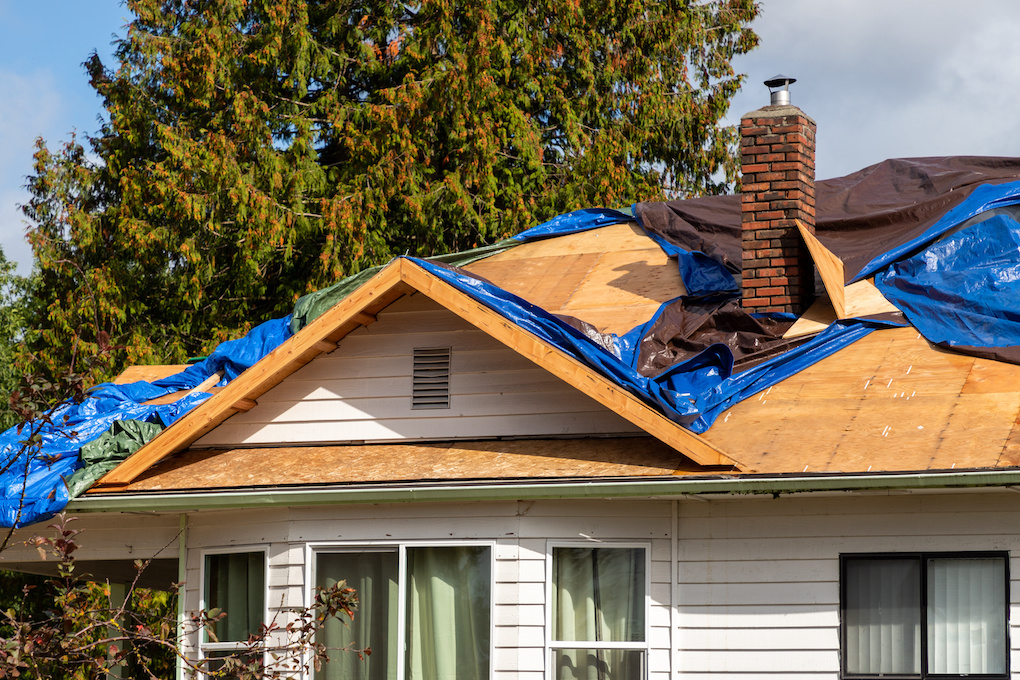
Hurricanes can hit Texas and the rest of the coastal states with high winds and damaging rain. All of the harsh weather and storms can really take a toll on your roof and the rest of your home.
After shingles are ripped from your roof, you’ll need to act fast to ensure that water doesn’t fill your home and cause further damage down the road. Obviously, you won’t be able to go out into the hurricane to tarp your roof—but as soon as the storm breaks, you should make every effort to get your roof tarped to keep any more water from coming in. Knowing how to tarp a roof is essential if you want to protect your home from further damage.
Roof Tarping Tools to Keep on Hand
If you live in any area of the country that’s prone to heavy storms and hurricanes, then you should be mindful of keeping roof tarping tools on hand. When you’re in a bind, and you find damage on your roof, you won’t want to be running to the store along with everyone else in your position to find the right tools. Here’s what you’ll need:
- Ladder and safety equipment
- Camera or smartphone for pictures
- Measuring tape
- Suitably sized tarp
- Thin wooden boards – 2×4 or smaller
- Tools to remove debris – roofing shovel, hammer, roof rake
- Nails or screws
Now that you have the right tools, here’s how to move through the process.
How to Tarp a Roof: Step By Step
Tarping your roof during stormy or windy conditions can be extremely dangerous, especially if your roof is steep and has several different changes in slope. If it’s too dangerous to tarp the roof, call the professionals at Eagle Eye Roofing, and we’ll give you the best recommendation or get your roof tarped for you.
If you decide that you can take on the challenge of tarping your own roof, then here are the steps you’ll need to follow.
Find the Damaged Area
When you’re able to get onto the roof, look for any shingles ripped off or other areas where there is exposed wood. If water gets into these exposed spots, it can cause serious damage to your home and belongings inside. In many cases, you’ll be able to spot severe damage from the ground. If you can’t, slowly comb over the roof, looking for different areas where the shingles don’t match up.
Determine the Size of the Damage
Use your tape measure to determine the size of the damage. If it’s a small section, you can fold the tarp over, and you might not need to cover nearly as much of the roof. If there is larger damage, you’ll need to find how large of the tarp will be needed to cover the damage successfully.
Take Pictures of the Damage
Before you go to the hardware store or back down to the ground to get the right supplies, take some pictures of the damage on your roof. Your insurance company will want to see pictures of the roof before the damage has been repaired or tarped at all. You can place a tape measure over the damage while taking the picture to reference how large the area is.
Select the Right Tarp
It’s important to use the right size tarp for your roof. If the tarp is too large, you’ll need to cut it or fold it, and if the tarp is too small, you won’t be able to cover the damage very well. A tarp closest to the size you need will help ensure that the damage is well covered.
Remove Loose Debris
If the shingles aren’t lying flat on your roof, you’ll need to clear them away with a shovel or rake. Other debris such as tree branches, leaves, tar paper, ice and water shield, and any other materials in the damaged area can be removed to ensure the tarp lays out flat on the roof.
Unroll the Tarp and Place it Over the Damage
Now that your roof is prepped for the tarp, you can carry it up to the roof and start unrolling it. If you’re dealing with a large area of damage, then you may need multiple roofers to help you secure it on the roof. Most roofing companies will require at least three members of their team to successfully tarp a roof.
Secure the Tarp to the Roof
Once you have the tarp over your damaged area, it’s time to secure it with nails or screws and the wood. The wood boards come in handy along the outside of the tarped area. Simply roll the tarp under the wood so that it’s pinned down on all four sides.
Adhere the Boards into the Roof Deck
After you’ve got the wood boards in place on the tarp, you can screw them or nail them into place. On larger areas, you might consider running some boards across the tarp and securing those as well to help keep the tarp from blowing up in the wind.
Tarping around Chimneys and Vents
If you have a chimney or vent that sticks out from the roof, it’s important to tarp around them well. The tarp should be secure against the vent or chimney, and you’ll need to make sure that it doesn’t flap around in the wind. Using strong, waterproof tape against it is a great way to ensure that it stays secure against those different areas.
Failing to cut holes for your vents or chimney could cause serious damage and be a hazardous risk to your home. Things like drain vents and attic vents are essential for the proper function of your home.
Tarping without Nails
Almost all roofers choose to use screws or nails to secure the tarps on the roofs, but sometimes homeowners or roofers won’t want to make any more holes in the roof deck. If this is the case, there are some products on the market that make it more possible. It’s still likely not the best way to keep water out, but it can work when you’re in a pinch or have specific applications.
The products offered are tarps made with a sticky glue-like substance on the back of the tarp. These substances work as adhesives to the roof and stick to the shingles, exposed wood, or other materials. They likely won’t stay in place as well or as long, but they are still somewhat popular.
How Long Should a Tarp Stay on Your Roof?
The answer to this question really is simple – the least amount of time possible. If you leave a tarp on your roof for too long, there’s always a possibility that the tarp could start to leak over time. Getting that damage fixed and the tarp off your roof as quickly as possible is of utmost importance.
When a roofing company puts a tarp on your roof, they’ll be there to get it taken off within the first week or two of it being on your home. Leaving that tarp on your roof will only be a liability for a roofing company, and you should see it as a liability for yourself as well. Getting that work taken care of as quickly as possible will mean the difference between your roof getting back to normal or having further damage.
Hurricanes are no joke, and they can leave a wake of destruction in their path. To keep your home and your roof safe, you need to be prepared to take action when your home needs it. Tarping a leaky roof is just one action that you can take to keep your home dry if there’s roof damage.
Eagle Eye Roofing can help you keep your roof up and ensure that your home is safe and dry. Call us if you suspect there’s damage or your roof is leaking. Our team can visit your home to offer a free inspection or tarp your roof until we’re able to make a good repair on the roof.
Reach out today to get professional storm damage care and the service your roof deserves.

